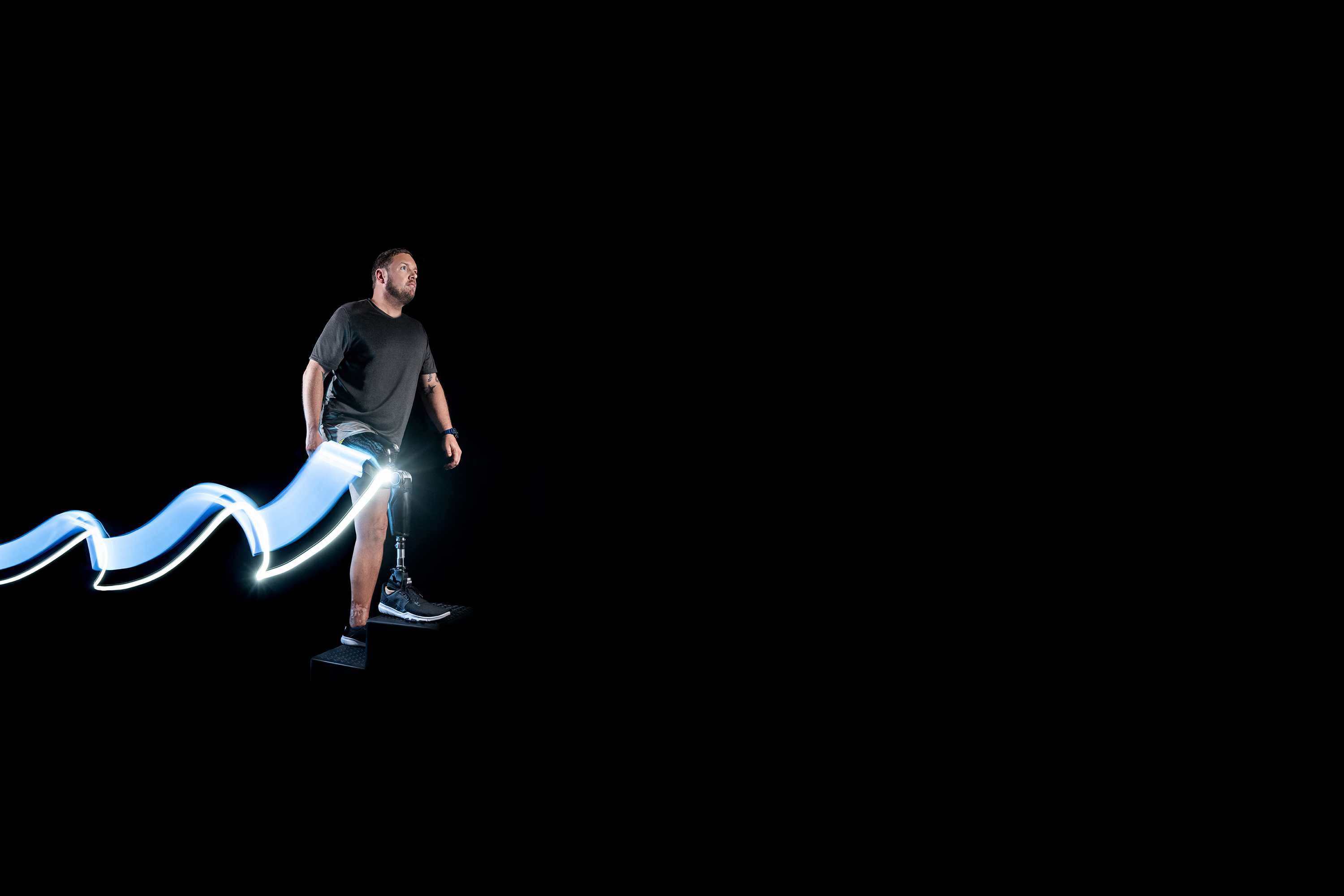なぜパワーなのか?
手足を失って生きているとき、動力は欠けている要素です。 運動性と同等の動力を返すことで、直感的に理解できるというメリットが実証されました。 動力によって一歩一歩がより軽くなり、世界は広がっていくのです。
エネルギーコストの削減
"一定量の筋肉がない義肢使用者は、
手足が無傷の人に比べ、
30~60%多くのエネルギーを消費します。"
Power Knee は、通常のマイクロプロセッサ式膝継手と比較して、
歩行時*のエネルギーコストを削減します。
対称性の改善
手足に障害があるほとんどの人にとって、
対称的に歩くことは困難なことです。
その負の結果として、日々の活力に影響を与え、
腰痛や膝関節症のリスクを高めます。³⁻⁷
POWER KNEE は、歩行、立ち上がり、
階段を上るなど、様々な活動において
対称性*を向上させます。²𝄒⁸⁻¹⁰
POWER KNEE
のストーリーをシェアする
LIFE WITHOUT LIMITATIONS にかける情熱はエンジニアを刺激し、
彼らの15年に及ぶ取り組みは人々の人生を変えています。
参考文献
- Genin JJ, Bastien GJ, Franck B, Detrembleur C, Willems PA. Effect of speed on the energy cost of walking in unilateral traumatic lower limb amputees. Eur. J. Appl. Physiol. 2008;103(6): 655
- Power Knee Mainstream Dynamic - Evaluation Report Synopsis, Össur hf, Steinþóra Jónsdóttir (2021). Data on file at Össur.
- Devan H, Tumilty S, Smith C. Physical activity and lower-back pain in persons with traumatic transfemoral amputation: a national cross-sectional survey. J Rehabil Res Dev 2012;49(10):1457-66.
- Devan H, Hendrick P, Ribeiro DC, Hale LA, Carman A. Asymmetrical movements of the lumbopelvic region: is this a potential mechanism for low back pain in people with lower limb amputation? Med. Hypotheses 2014;82(1):77–85.
- Matsumoto ME, Czerniecki JM, Shakir A, Suri P, Orendurff MS, Morgenroth DC. The relationship between lumbar lordosis angle and low back pain in individuals with transfemoral amputation. Prosthet and Orthot Int 2019 Apr;43(2):227-232. Epub 2018 Aug 18.
- Morgenroth DC, Orendurff MS, Shakir A, Segal A, Shofer J, Czerniecki JM . The relationship between lumbar spine kinematics during gait and low-back pain in transfemoral amputees. Am J Phys Med Rehab 2010;89(8):635–43.
- Harandi VJ, Ackland DC, Haddara R, Lizama LE, Graf M, Galea MP, Lee PV. Gait compensatory mechanisms in unilateral transfemoral amputees. Medical Engineering & Physics. 2020 Jan 7.
- Wolf, E. J., Everding, V. Q., Linberg, A. A., Czerniecki, J. M. & Gambel, C. J. M. Comparison of the Power Knee and C-Leg during step-up and sit-to-stand tasks. Gait Posture 38, 397–402 (2013).
- Highsmith, M. J. et al. Kinetic asymmetry in transfemoral amputees while performing sit to stand and stand to sit movements. Gait Posture 34, 86–91 (2011).
- Knut Lechler. Biomechanics of sit-to-stand and stand-to-sit movements in unilateral transfemoral amputees using powered and non-powered prosthetic knees - Congress Lecture [5038] Abstract [1459]. (2014).
References for our brochure can be found here.
